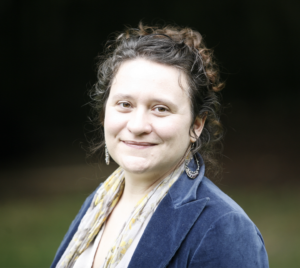After a thorough systematic analysis, Micheal Sandbank, PhD, at the UNC School of Medicine and other researchers across the United States found that evidence was lacking that higher intensity interventions provided increased benefits for young autistic children.

When a child is diagnosed with autism, healthcare professionals often recommend intensive interventions, which can amount to 20-40 hours per week, to support their development.
However, a new study led by Micheal Sandbank, PhD, assistant professor in the Department of Health Sciences at the UNC School of Medicine, and other researchers across the United States has found that more does not necessarily mean better.
Using data from 144 early childhood intervention studies, which involved 9,038 children between the ages of 0 to 8, researchers conducted a meta-analysis to determine whether higher intensity interventions provided increased benefits for young autistic children compared to less intensive interventions. They found that intervention outcomes did not improve as intervention intensity increased. Their results were published in JAMA Pediatrics.
“We concluded that there was not rigorous evidence supporting the notion that increasing the amount of intervention produces better intervention outcomes,” said Sandbank, who was first author on the study. “Instead, we recommend that practitioners consider what amount of intervention would be developmentally appropriate for the child and supportive to the family.”
The most commonly recommended approach for autistic children in the United States is called “Early Intensive Behavioral Intervention,” or EIBI. The current clinical guidelines regarding intensive intervention arose from a 1987 study which found that autistic children who received 40 hours of behavioral intervention per week had more cognitive improvement than those who received only 10 hours per week.
But many subsequent studies about behavioral intervention methods have provided mixed results and are lacking in quality. Of note, many studies have confused intervention amount with intervention approach, provided null results, or required retractions.
In November 2023, Sandbank found that many low-quality studies are dominating the field and that few studies have adequately examined whether interventions can have adverse effects or harms. Notably, interventions requiring young children to be away from home for long durations of time can deprive them of critical rest, socialization with family members, and more.
“In order to determine what amount of intervention is most effective, while also being minimally interruptive, we need more high-quality primary studies,” said Sandbank. “Few high-quality studies systematically compare the same intervention offered at different amounts.”
Many different types of intervention may be offered to young children on the autism spectrum. Behavioral interventions systematically teach functional and cognitive skills through direct one-on-one teaching and tend to be very intensive. Developmental interventions focus on improving children’s engagement and social interaction through play with their caregivers and are frequently provided for only a few hours per week. Naturalistic developmental behavioral interventions blend behavioral and developmental approaches. All of these interventions can look very similar or very different in their implementation, depending on the provider.
In order to thoroughly investigate the impact of intervention amount, researchers measured it in three ways. They defined “intensity” as the amount of intervention provided within a given time frame (such as hours a day), “duration” as the total amount of time (in days) that intervention is provided, and “cumulative intensity” as an overall metric that describes the total intervention provided over the total duration.
Using these three metrics, researchers explored whether intensity, duration, or cumulative intensity were associated with developmental benefit in young autistic children. At the same time, researchers wanted to determine if the strength of the relationship between the metrics and developmental improvement differed depending on the type of intervention provided.
Their final sample for their meta-analysis included 144 separate studies involving a total of 9,038 participants. Knowing that neuroplasticity, or the brain’s ability to adapt, is at its height during this developmental period and may affect the success of intervention, researchers controlled for participant age. They also accounted for the quality of included studies and intervention type with the help of meta-regression models.
Taking all of these factors into account, researchers found no evidence that higher intensity interventions provided increased benefits for young autistic children. The evidence contrasts the results of quasi-experimental studies and some meta-analyses suggesting that high-intensity behavioral interventions are associated with more cognitive gains in young children on the autism spectrum.
“There’s probably a minimum amount of intervention needed to provide any benefit at all, and an optimal amount that is dependent on the child,” said Sandbank. “Unfortunately, right now, we don’t have clear evidence as to what that amount should be,” said Sandbank.
This research suggests clinicians should avoid providing any specific amount of intervention as a default recommendation. Instead, clinicians should inform families that no single intervention amount is right for every child, and that a careful balance must be struck to meet the demands of intervention with other needs of the child to ensure that they thrive.
Media contact: Kendall Daniels, Communications Specialist, UNC Health | UNC School of Medicine